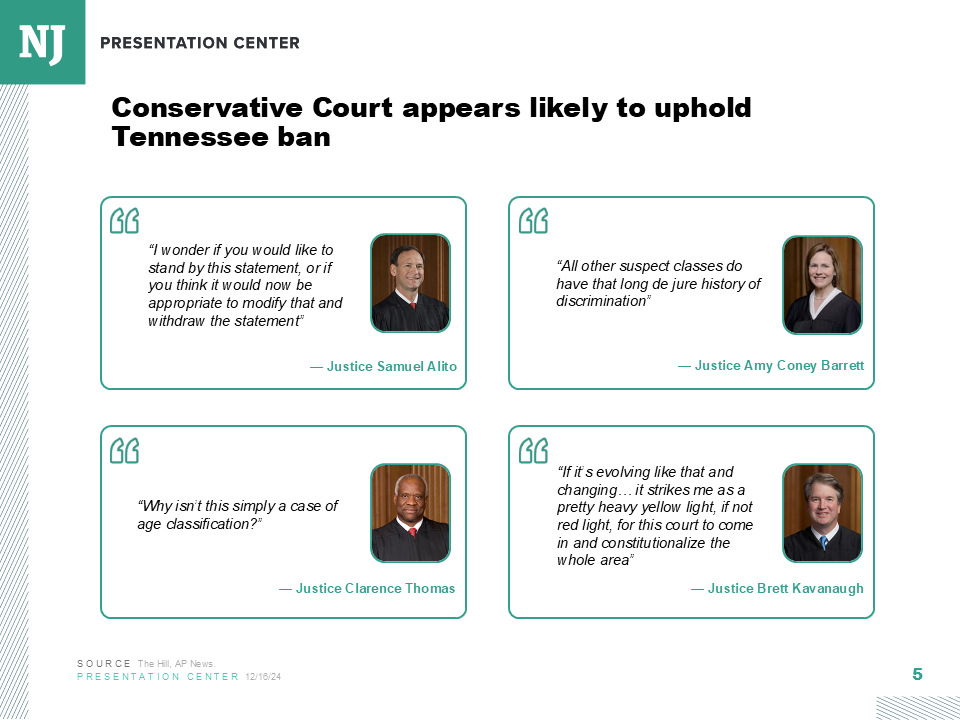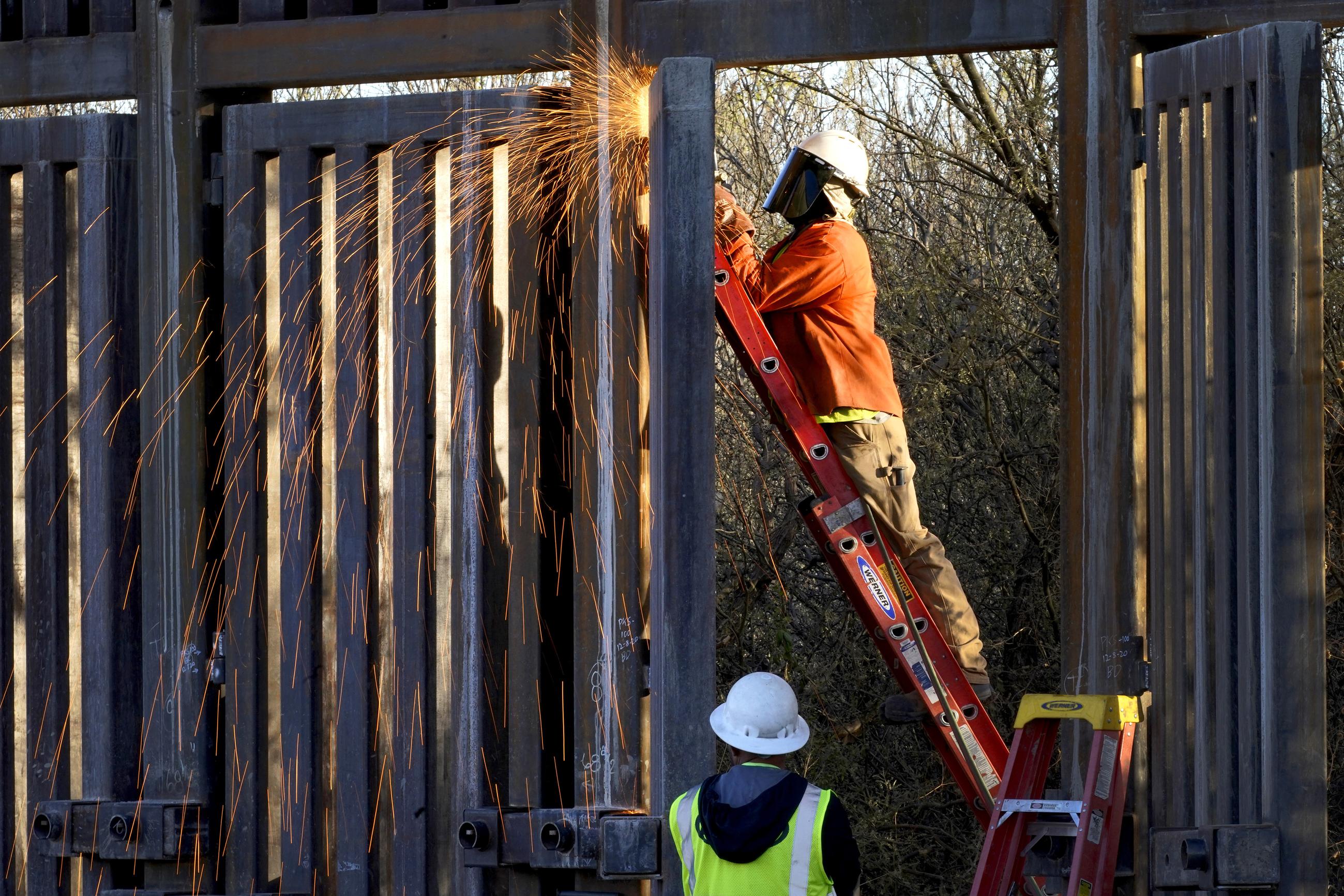Fifteen years ago, the Republican State Leadership Committee, under its REDMAP project, poured $30 million into flipping state chambers—and it succeeded in securing the power of the pen for the decade ahead. Democrats, who lost control of 20 chambers that year, are still clawing their way back.
With REDMAP in the rearview mirror, and potential Democratic losses after mid-cycle redistricting in Texas and Missouri on the horizon, the Democratic Legislative Campaign Committee has launched its Dems On Redistricting Offensive, a national push to win key legislatures and boost fundraising before 2030. The group’s Republican counterpart is rolling out Project Doorstrike, a multi-state, multi-year effort to expand paid state-level voter contact and GOTV programs, focusing on Pennsylvania, Michigan, Minnesota, and Wisconsin in 2026.
Hotline is spotlighting six states, ordered alphabetically, where narrow legislative margins and national investment will define which party can tilt the congressional balance of power when redrawing maps. Our analysis draws on interviews with political operatives, fundraising data, and state-level electoral trends to highlight the most essential chambers for either party to secure in the next five years.
New Hampshire House (218R-177D)
The New Hampshire state House has flipped numerous times this century. With 400 members, it is the largest state legislative chamber in the country, and its size makes it uniquely volatile: Interpersonal relationships, local dynamics, and the sheer volume of turnover often matter as much as statewide trends. Republicans now hold about a 40-seat advantage, and while Democrats say they mitigated some losses in the chamber in 2024, they face an uphill battle ahead of 2030. The Democratic Legislative Campaign Committee has placed the Granite State on its power-building list.
Republican former Gov. Chris Sununu vetoed GOP-leaning congressional maps in 2022, paving the way for Democrats to hold both districts. His GOP successor, Gov. Kelly Ayotte, has found herself in the crosshairs of the Trump administration as the White House looks to expand the 2026 map via redistricting, but she’s held firm. However, with Ayotte secure in the governor’s seat for the foreseeable future, since the state has no term limits, Democrats might not be as lucky during the next redistricting period. That makes flipping a chamber all the more important.
Minnesota House (Tied) and Senate (33D-32R)
Few states illustrate the rising stakes of redistricting more clearly than Minnesota, where both the state House and state Senate have flipped control multiple times in the past 20 years. The state House is currently split after a special election filled former House Speaker Melissa Hortman’s seat following her assassination. Democrats hold a one-seat majority in the Senate, which is unlikely to change following two special elections in November: one in a Democratic stronghold and another in a Republican district. Democrats are banking on shifting dynamics in the Twin Cities suburbs that often decide statewide outcomes, while rural parts of the state still lean Republican.
In both 2010 and 2020, redistricting stalemates between the governor and legislature forced the state Supreme Court to step in. The legislature has not passed and approved maps signed by the governor since the 1970s. Partisan control in both chambers hangs on a knife’s edge. A trifecta might be harder to achieve for Republicans in the nationally blue-leaning state, and Democrats hope they might finally exert control over the redistricting process.
Nevada Assembly (27D-15R)
Democrats have lost some footing in the Silver State. Republican Gov. Joe Lombardo narrowly defeated the incumbent Democrat Steve Sisolak in 2022. Trump flipped the state again in 2024, the same cycle a GOP pickup cost Assembly Democrats their supermajority.
The GOP has only controlled the chamber once in the last 30 years, when popular incumbent Republican Gov. Brian Sandoval ran for reelection. Republicans are hopeful that Lombardo, who remains popular statewide, might usher in more Republican flips. However, he is considered one of the most at-risk governors, prompting a competitive gubernatorial race that could also bring out Democrats. Given Republicans’ swing with suburban voters in Clark County and Washoe County, the party sees these as a pathway to start chipping away at the Democrats’ majority.
State Democrats enacted an effective gerrymander following the 2020 cycle, taking a gamble on Democratic votes in the Las Vegas area to create three competitive but Democratic-leaning seats. It paid off. National Republican groups spent roughly $10 million in 2022 to try to flip the three Vegas-area seats, but to no avail, leading them to abandon the state altogether in 2024.
Plenty will be at stake in the 2030 gubernatorial election, which will likely be Republicans’ best chance at preventing another Democratic-dominated redraw.

Pennsylvania House (102D-101R) and Senate (27R-23D)
Democrats flipped the Pennsylvania House in 2022 for the first time in a decade and barely held their one-seat majority in the 203-member chamber in 2024. Republicans, meanwhile, have maintained control of the state Senate since the early 1990s, even as the state has swung for Democrats in statewide and federal elections. Republicans have held a consistent +8 or +6 majority over state-Senate Democrats for the last seven years.
In 2024, Republicans flipped a northeast Philadelphia Senate district held by Democrats for two decades. This year, a March special election in SD-36 drew national attention after a Democrat flipped a seat President Trump had won by 15 points. Democrats typically overperform in special elections, so they can’t always be used as a bellwether ahead of general elections, but the Democratic pickup narrowed the Senate Republicans’ majority to four.
Democratic Gov. Josh Shapiro’s popularity could provide a turnout boost for Democrats, but in a closely divided swing state, neither party can count on national or statewide coattails to carry downballot races. The stakes rise if three Democratic state Supreme Court justices lose retention elections this year, kicking off partisan races to decide control in 2027. The state Supreme Court drew the maps after the 2020 census when Democratic former Gov. Tom Wolf vetoed maps drawn by the Republican-controlled legislature. If either party can sweep the legislature, governor’s seat, and Supreme Court ahead of the 2030 census, they can drastically change the makeup of the commonwealth’s 17 congressional districts.
Virginia Senate (21D-19R)
Virginia will hold the earliest elections for lawmakers who will hold power following the 2030 census. With off-year elections, the entire state Senate will be up in 2027 and serve four-year terms, ending right as the map fight begins in 2031. As Democratic former Rep. Abigail Spanberger is the frontrunner to take the governor’s seat this year, state-House Democrats may find success riding her coattails. But state senators aren’t on the ballot until the off-year race in 2027, which could be a litmus test in response to the statewide offices. A Democratic trifecta in 2025 could just as easily spark a voter backlash two years later. The Virginia Senate will be the first test for either party to secure a chamber in their favor ahead of the 2030 census.
A politician-led commission, in conjunction with the legislature, produces Virignia’s congressional map. The commission failed to pass a map after the apportionment period, and the state’s Supreme Court stepped in. The state also has built-in minority-voting protections, which could prove an effective guardrail if the Supreme Court guts Section 2 of the Voting Rights Act.
Wisconsin Assembly (54R-45D) and Senate (18R-15D)
Democratic Gov. Tony Evers signed new state legislative maps in 2024 after the state Supreme Court ruled maps with districts that were not contiguous were unconstitutional. The new maps undid strongholds the GOP held for the last 20 years. In the first elections under the new maps, Democrats gained 10 House seats and four in the Senate, though Republicans still hold narrow majorities—nine seats in the House and three in the Senate. Democrats are five seats away from flipping the House. With staggered state-Senate elections, half of the state-Senate seats will face reelection under the new maps for the first time in 2026, providing Democrats an opportunity to narrow Republicans’ lead. The redrawn maps prompted retirements in the Assembly and Senate, creating a short wave of open-seat opportunities that is unlikely to repeat ahead of 2030.
Democrats retained the liberal majority in the state Supreme Court this year, after first securing a majority in 2023, and they could expand it in April when a conservative justice retires. Controlling the courts will be paramount for either party, as Democrats have targeted the current congressional map in the courts for the last few years to no avail—allowing Republicans to maintain a 6-2 partisan edge.
Those lines, which adopted a “least change” approach from the current lines, were proposed by Evers after he vetoed GOP-passed lines. Republicans passed the 2010 lines. With new maps for the legislature, Democrats could have their first chance to draw their own lines in a long time.








